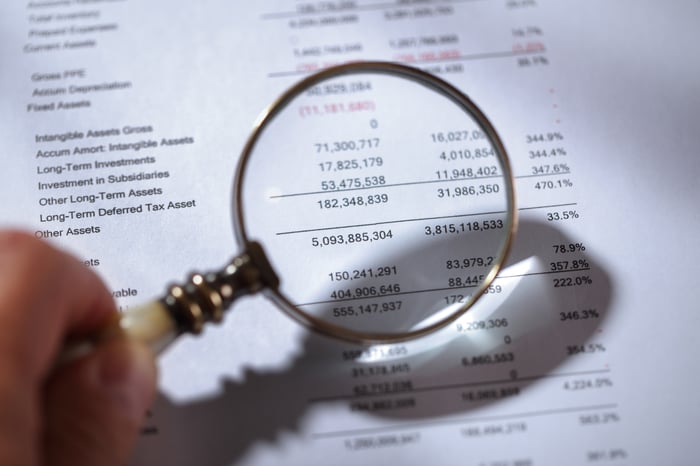Over the past 10 years, electric-vehicle (EV) maker Tesla (TSLA 15.31%) has been one of the top-performing companies within the broad-based S&P 500. As of the closing bell on Nov. 29, Tesla had delivered a nearly 2,800% return over the trailing decade.
Additionally, it's become one of the largest publicly traded companies. Tesla's $776 billion market cap has made it an integral part of the Magnificent Seven, which have propelled the broader market higher in 2023.
While Tesla stock has been a successful investment for many, I can't help but overlook what appears to be a $625 billion blunder in the making for the company's faithful shareholders.

A Tesla Model S charging. Image source: Tesla.
Giving Tesla credit where credit is due
Before digging into the details and explaining what I mean by a "$625 billion blunder," let me first give the company credit where credit is due. No other automaker had successfully built itself from the ground up to mass production in more than a half-century until Tesla drove onto the scene.
What's more, it's become the first pure-play EV maker to generate a recurring profit, based on generally accepted accounting principles (GAAP). While plenty of legacy automakers are profitable on a GAAP basis, their burgeoning EV divisions are bleeding red. This isn't the case for Tesla, which appears to be on track to deliver a fourth consecutive year of GAAP profits.
The world's largest automaker by market cap is also attempting to diversify its revenue channels beyond traditional EV sales and leases. There's arguably a mammoth opportunity for Tesla to generate high margins by selling full self-driving (FSD) subscriptions. Additionally, Tesla has expanded into energy storage, and looks to be the leading supercharger network for EVs in the U.S.
Lastly, Tesla has thrived because of its innovation. CEO Elon Musk has brought four EV production models to market (Models 3, S, X, and Y), with the Cybertruck ready to join the party.
Putting your faith in Elon Musk may be a $625 billion blunder
But whereas Tesla optimists value Musk for his innovation and leadership, I believe this to be a critical mistake. Musk's lengthy history as CEO is full of unmet promises, which is a potentially big problem for an automaker whose market cap is greater than virtually all other major auto companies combined.
There are more innovations and promises built into Tesla's valuation than can be counted -- everything from a promised $25,000 mass-produced EV to Optimus robots have fueled speculation in Tesla stock. But when push comes to shove, many of Musk's promises and innovations are punted to a later date or remain wholly unrealistic.
For instance, Musk opined that Tesla would have "over a million robotaxis on the road [next year]" in October 2019. Though autonomous ride-hailing represents a mouthwatering sales driver, Tesla hasn't been able to move past Level 2 autonomy with its EVs. Put another way, Tesla is no closer to having a single robotaxi on the road -- let alone 1 million -- than it was four years ago.
To build on this point, Musk has been claiming that his company is "one year away" from achieving full autonomy (i.e., Level 5 FSD) for the past 10 years. This seemingly annual promise has almost completely lost its luster.
Beyond FSD, Musk and his company often have a hard time sticking to initially touted timelines. Both the Berlin and Austin gigafactories opened their doors later than anticipated, while the Cybertruck's debut was delayed by two years.
At some point, these promises either need to be fulfilled or backed out of Tesla's valuation. My best guess is that we're going to see the latter as Musk's innovative credibility fades.
As of today, Tesla is commanding a forward-year earnings multiple of 70 in an industry that traditionally values auto stocks at a multiple of closer to 7 times forward-year earnings. Even if Tesla were to command a forward price-to-earnings multiple of 15, which would be roughly double that of legacy automakers, its market cap would be set for a decline of approximately $625 billion. Investors placing their faith in Elon Musk may ultimately be sorely disappointed.

Image source: Getty Images.
Tesla's key performance indicators are deteriorating
In addition to Musk being a major liability for Tesla and its shareholders, there are other concerning signs that North America's top EV manufacturer is struggling. Despite strong sales growth, a couple of key performance indicators are deteriorating.
For example, Tesla kicked off a price war earlier this year that had optimists believing production efficiencies were being realized. However, Musk clarified during his company's annual shareholder meeting that Tesla's pricing strategy is driven by demand. Tesla enacting more than a half-dozen price cuts across its four production models clearly signals that demand hasn't kept up with the company's production ramp. Unsurprisingly, Tesla's operating margin has been more than halved over the trailing year (ended Sept. 30) -- from 17.2% to 7.6%.
To add, global vehicle inventory, better known as "days of supply," has been climbing. Days of supply is defined as new car inventory divided by the relevant quarters' deliveries. Roughly two years ago, Tesla's days of supply clocked in at three days. As of Sept. 30, it was 16 days. Even with aggressive price cuts, Tesla's new car inventory continues to climb.
We're also seeing Tesla struggle to become more than just a car company. Though its supercharger network has become the EV charging standard for a number of legacy automakers, Tesla's Energy Generation and Storage segment sales have practically stalled since the first quarter on a sequential basis. To boot, Tesla's ancillary operations are generally low-margin segments.
Although Wall Street can remain irrational for an undetermined period, I can't envision a scenario where an auto stock sustains a valuation that's 10 times greater than its peers over the long run.





